Chevrolet Cruze vs Skoda Octavia vs Volkswagen Jetta vs Toyota Corolla Altis: Comparison
Space and comfort are the forte of D-Segment sedans. We lined up the Chevrolet Cruze, Skoda Octavia, Volkswagen Jetta, and Toyota Corolla Altis to see which one does it better. Let's find out.
Say what you may, but the D-segment has been on the verge of extinction from the market for some time. So, has the launch of the refreshed Chevrolet Cruze managed to breathe life back into this segment? We assemble the usual suspects to find out.
In the not too distant past, the world around us used to be a much simpler place. Mobile phones used to be sleek, YouTube videos ran ad free, apparel was still bought from brick-and-mortar outlets, and you could eat whatever you wanted. Now, though, for better or worse, everything has changed. From an automotive perspective, it’s got even more complicated. You now have hatchbacks pretending to be SUVs, sedans shrinking to save taxes, and SUVs becoming more “sporty.”
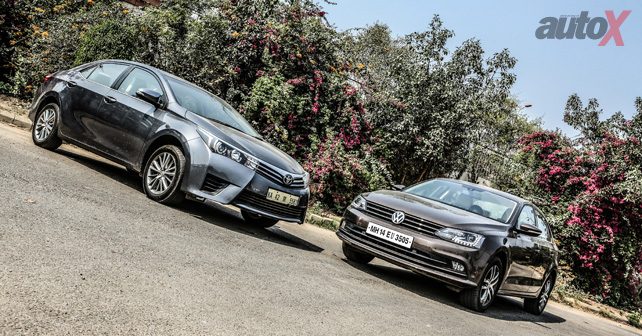
These are trying times indeed for those who prefer their cellphones simple and their set of wheels a little less pretentious. Which brings us to D-segment cars. With the advent of pseudo SUVs, sales of executive sedans have dropped like a stone. But the question is this – is there really any point in having a high-riding vehicle if its duties are confined to the city?
The fact is if you’ve got `15-20 lakhs burning a hole in your pocket, a D-segment car really is the way to go. And that means one of these is your best bet – the updated Chevrolet Cruze, Volkswagen Jetta, Skoda Octavia, and, the king-of-the-segment (sales wise), the Toyota Corolla Altis. I know, we’ve missed the Hyundai Elantra and Renault Fluence. But the Elantra doesn’t really make much of a dent on the sales charts, and we weren’t even sure whether Renault still bothers to sell the Fluence.
Quite ironically, the newest car of the bunch here also happens to be technically the oldest. Chevrolet may have tried to mask the Cruze’s age by refining its exterior design, but, in essence, it’s nearly a decade old underneath. Even so, the Cruze still looks the part. In the refreshed model, you get a new front bumper, new set of wheels, a lot of chrome, LED DRLs, projector fog-lamps, and a boot-lip spoiler. The headlamps are still halogen though, as opposed to the projector lamps offered in the other three. Not only that, the illumination from the lamps is poor.

Surprisingly, the only car that comes close to looking as aggressive as the Cruze here is the Corolla Altis. Nobody expected Toyota designers to go all out with the Corolla, but they did! The Corolla Altis, in its 11th generation, looks much sharper than its German and Czech rivals. However, if clean lines is what you prefer, look no further than the Octavia. The Octavia’s design is very hard to falter. The same could have been said about the Jetta, but it’s getting a little long in the tooth now. The Jetta looks so similar to the face-lifted Vento that you almost give up on its design before even giving the car a complete look.
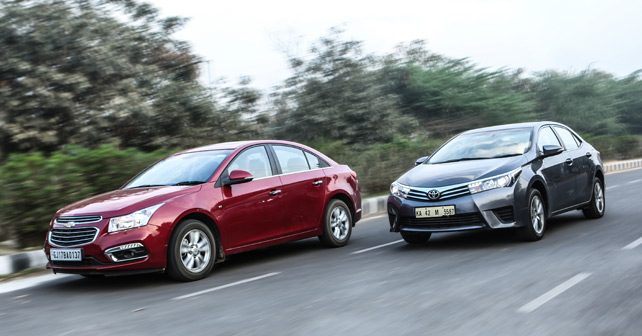
It’s the same story inside too. Although its interior oozes quality, the Jetta’s cabin layout is now commonplace – especially if you’ve been inside a Polo or Vento. The driver’s seat is comfortable and has nice bolstering though – it’s 12-way electrically adjustable, so getting a perfect driving position is a cakewalk. The touchscreen infotainment screen, though, looks ancient in comparison to the others here. The rear seats are nicely padded, but the car’s lower height means that ingress and egress could be a problem for taller passengers. After getting out of the Jetta, the Cruze’s interior feels low-rate for a `17-lakh car. The plastics used are hard and tacky. On the upside, the Corvette-inspired steering wheel and instrument cluster go very well with the car’s sporty intentions. Plus, the new 7-inch MyLink touchscreen infotainment system is intuitive and packs a lot of new features, including a rear-view camera – which is missing in the Jetta. The audio quality from the music system could have been better though.
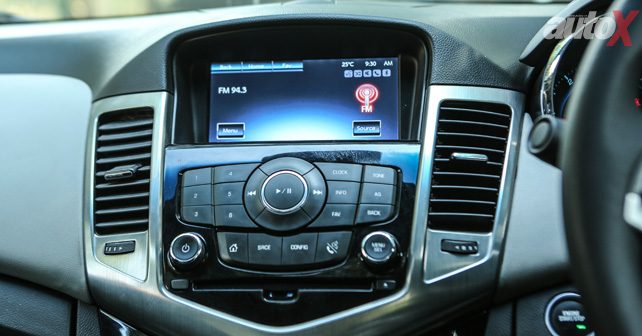
The driver’s seat is nicely contoured though, and the side support is adequate. It’s only 6-way electronically adjustable however, so you do have to manually recline the backrest. Plus, the seats (both front and rear) lack under-thigh support and feel hard in comparison to the others. While legroom is adequate at the back, the headroom is compromised thanks to the sloping roofline. You’ll also have to do without AC vents in the rear of the Cruze. But then the Corolla Altis doesn’t offer rear vents either. In terms of cabin space, though, the Toyota trumps the rest. The Corolla’s rear bench is the flattest and most comfortable. It’s also the only one here with reclining rear seats. The nearly flat floor also means that three passengers can sit comfortably abreast.
The Octavia’s cabin is the most opulent of the lot – and that too by a long way. The quality of materials used, fit-and-finish, and tidiness of the cabin is head-and-shoulders above the rest. The touchscreen infotainment system is easily the best here, and is brimming with features such as Smartlink connectivity. Moreover, the Octavia is the best equipped car of the quartet. In addition to what’s offered in the Jetta, the Octavia gets a sunroof, tyre-pressure monitoring system, driver seat with memory function, auto-tilting left-side ORVMs while reversing, and more. It also has the largest boot of the four with a cavernous luggage space of 590 litres.
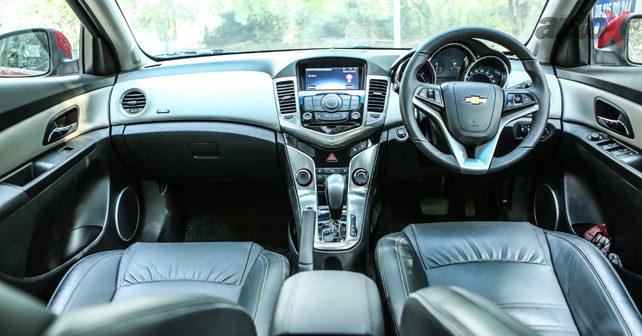
And, once you get going, the Octavia stamps its superiority. The model we tested is the top-of-the-line diesel automatic, or in company-speak, the Style Plus. Headlining this variant is VW Group’s famed EA189 (or should I say infamous?) 2.0-litre turbo diesel that churns out 141bhp and 320Nm of torque. Channelling power to the front-wheels is a 6-speed DSG automatic. The Jetta runs on an identical engine-gearbox setup delivering slightly less power output (138bhp), but the same torque. While the drivetrain virtually performs identically in both the cars, it’s the Octavia that feels sprightlier. That’s mainly due to the weight difference between the two – the Octavia is almost 44 kilograms lighter than the Jetta. The Jetta is still underpinned by a generation old PQ35 architecture as compared to the Skoda, which is based on the group’s latest (and lighter) MQB platform.
The Jetta also feels more exposed to the elements in comparison, as it doesn’t completely isolate you from outside – keen drivers will find this trait more appealing though. In sports mode, the 6-speeder in both cars holds the cogs and upshifts just a few hundred revs before hitting the 5,000rpm redline. The fact that the Jetta is the only car fitted with paddle-shifters in this comparo makes it the most engaging car to drive. That said, both cars suffer from turbo-lag low in the rev range. In stop-go traffic too, the gearbox feels a bit slow to respond.
On paper, the Chevy has the competition licked – its 2.0-litre four-cylinder turbo-diesel boasts class leading power and torque figures of 164bhp at 3,800rpm and 360Nm at 2,000rpm. It doesn’t have a quick-shifting double clutch auto ’box, but a six-speed torque converter that performs its duties quite effortlessly.
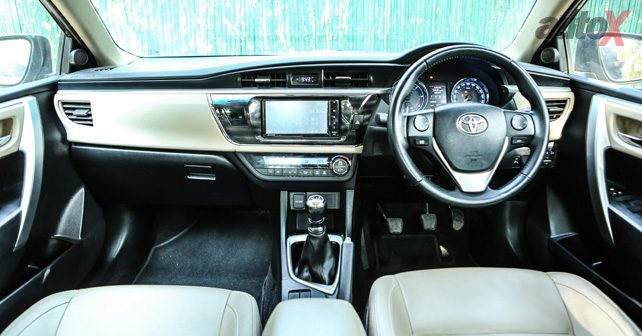
Like the Jetta and Octavia, the Cruze has a perceptible lag before the turbo spools up completely. But once past the 2,000rpm mark, the Cruze gets going like no one’s business. Upshifts are quick and jerk-free, and the engine refinement is the best of this lot. Despite having a superior powertrain though, the Cruze doesn’t cover ground as briskly as you’d expect. Part of the problem lies with its age and weight – it’s a full 165 kilograms heavier than the Octavia!
In comparison to the rest, the Corolla Altis’s spec-sheet will have you believed that it belongs in a segment lower. It comes powered by a 1.4-litre diesel unit that develops only 87bhp at 3,800rpm and 205Nm between 1,800-2,800rpm. In addition to that, Toyota doesn’t offer the diesel version of the Corolla Altis with an automatic gearbox – meaning that you’ve to do all the hard work yourself. The Toyota is simply outclassed by its rivals here in terms of engine performance.
The Corolla Altis may be the slowest car here, but that’s okay because it isn’t meant to smash any land speed records. It’s made to ferry people around in utter comfort, and, suffice to say, it excels at that. The handling is neutral, but the electric steering is lifeless and offers zero feedback.

The Cruze, on the other hand, is a mixed bag in terms of ride and handling. Low speed ride is a little stiff, yet it irons out undulations in a compliant manner. Straight-line stability is impressive, and it’s only when you approach a tight corner that the Cruze is out of its comfort zone. It doesn’t roll as much as the Corolla, but the steering feels too light and discourages you from going faster. The sub-par JK tyres that it comes fitted with are another reason to show restraint.
Despite being the longest car in the segment, the Skoda Octavia handles corners with aplomb. It’s as easy to manoeuvre in day-to-day traffic, as it is rock solid on an empty stretch of road. Thankfully, none of this comes at the cost of the ride quality. It has a delectable ride-and-handling balance that makes it dynamically the most sorted car in the segment. Since the Octavia is technically the more advanced Volkswagen group vehicle here, you’d assume that the Jetta is dynamically inferior to its Czech cousin. You see, the Jetta features a multi-link independent suspension setup at the rear while the Octavia has a more cost-friendly torsion-beam mechanism. While, most of time, you can’t really tell one from the other, around a winding section of road, the Jetta feels more agile and sure-footed than all of its counterparts. As a trade-off, the ride is a little stiff – especially at low speeds.

Where do you put your hard-earned money then? I’d love to suggest the Skoda Octavia, because it excels at everything and feels more premium than the rest. However, you’ll be paying through your nose for all its prowess – with all the bells and whistles, the Octavia is priced at `22.14 lakhs. That’s a lot for a car that was priced at nearly half that value only a decade ago. And the ownership costs are daunting when dealing with Skoda’s aftersales. The VW Jetta suffers from the same cause – and, although it’s not as refined as the Octavia, if you like driving yourself, the Jetta is a wee-bit better. At `20.80 lakhs, it’s more affordable too.
The Cruze finds itself lost in this battle. Neither is it as sophisticated as the aforementioned duo, nor is it as practical and spacious as the Corolla Altis. It’s got a charming personality, bonkers powertrain, and comes across as great value, but it just doesn’t feel like a premium sedan – making it hard to justify its asking price of `16.95 lakhs!
There’s a reason, then, why the monthly sales figures of the Corolla Altis are higher than the combined sales of the other three – and that’s because, without breaking the bank, it defines what a premium sedan should be. At `16.42 lakhs for the top-end model, it’s the most affordable car here and comes decently packed with features and equipment. The ride quality is stellar, and it’s got the most comfortable seats of the bunch. It might be uninspiring to drive, and the build quality may not be up there with the best, but because it’s a Toyota you know that it’ll simply last forever. If you want an automatic gearbox, and better engine performance, you may want to look at the petrol-powered Corolla. But if it’s comfort, efficiency, value-for-money, and peace of mind that you’re after, look no further than the 1.4 D-4D Toyota Corolla Altis.
Engine: 1,998cc / In-line 4-Cylinders / 16 Valves / DOHC
Fuel: Diesel
Transmission: 6-Speed Automatic / Front-Wheel Drive
Power: 164bhp @ 3,800rpm
Torque: 360Nm @ 2,000rpm
Price: Rs. 16.95 lakhs (Ex-showroom, Delhi)
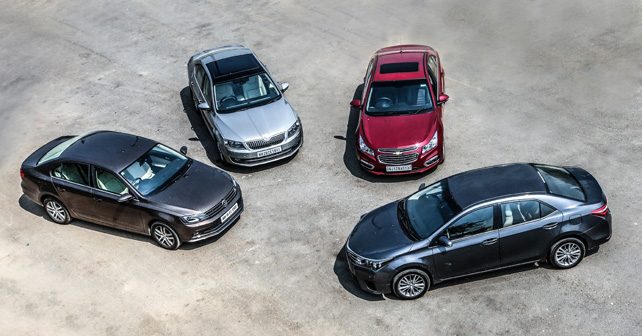
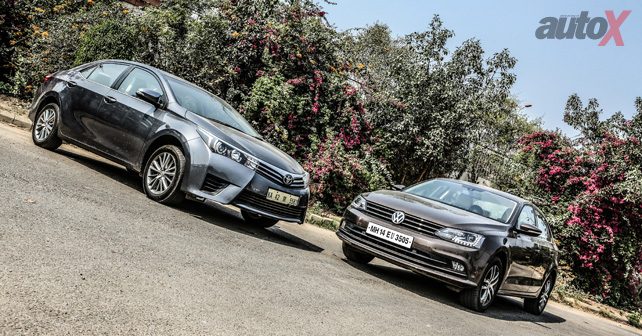
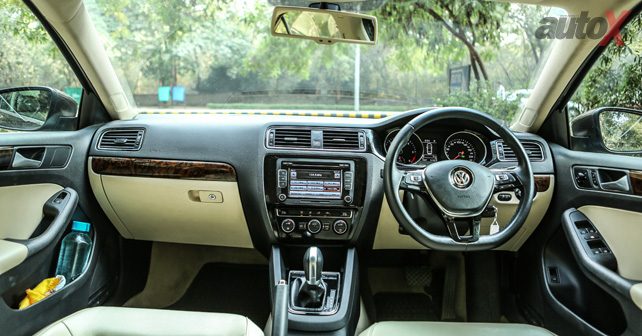
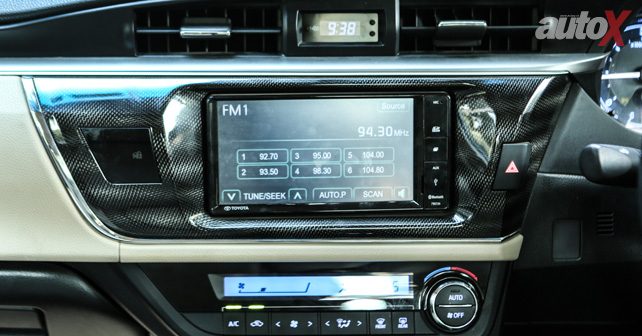
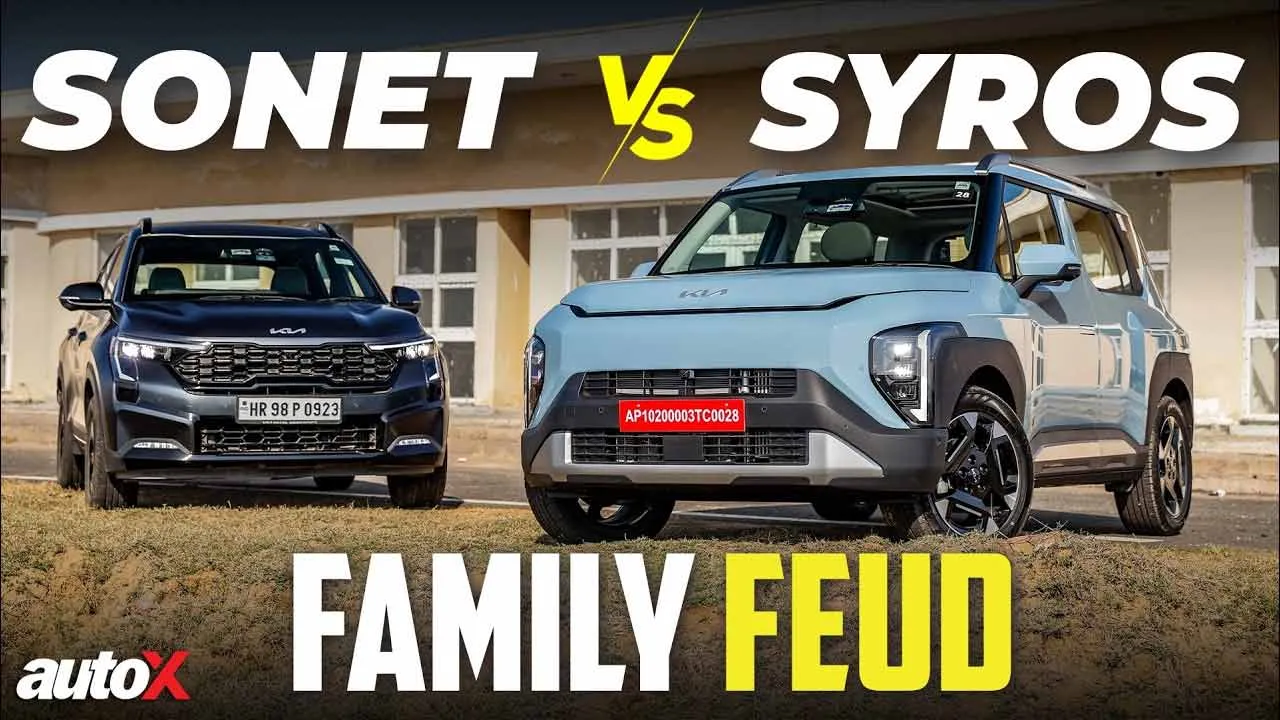



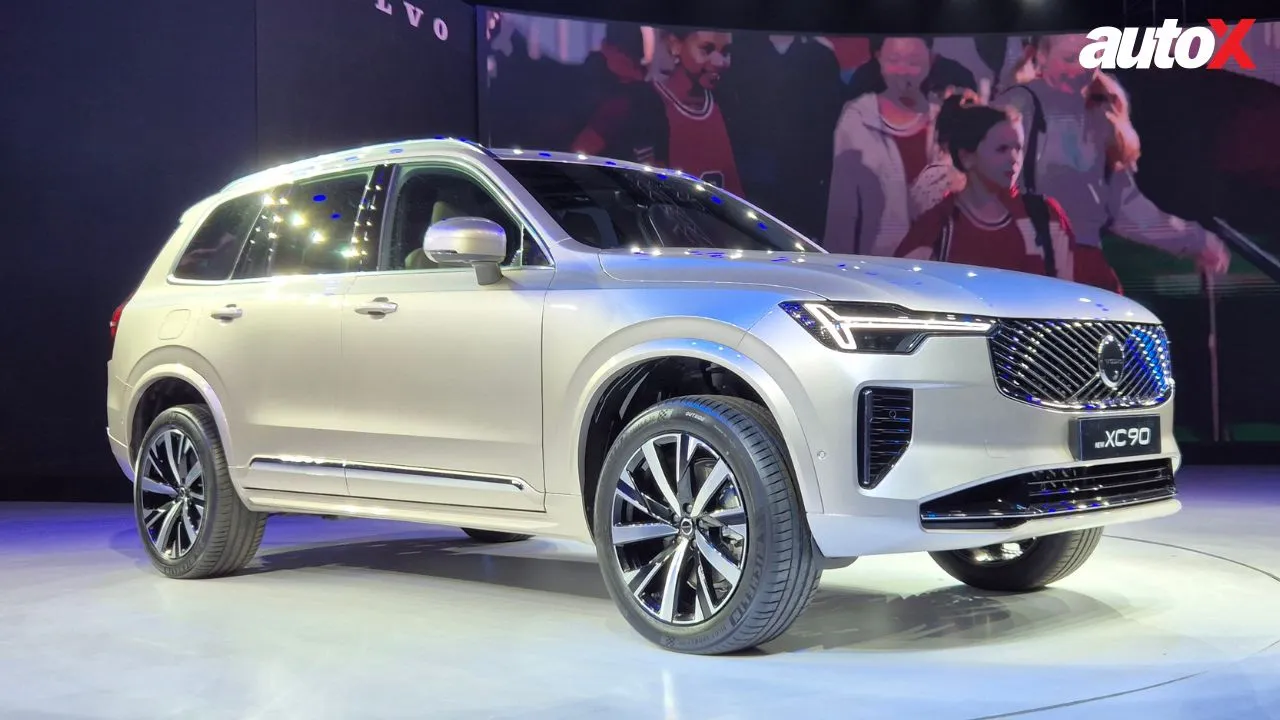


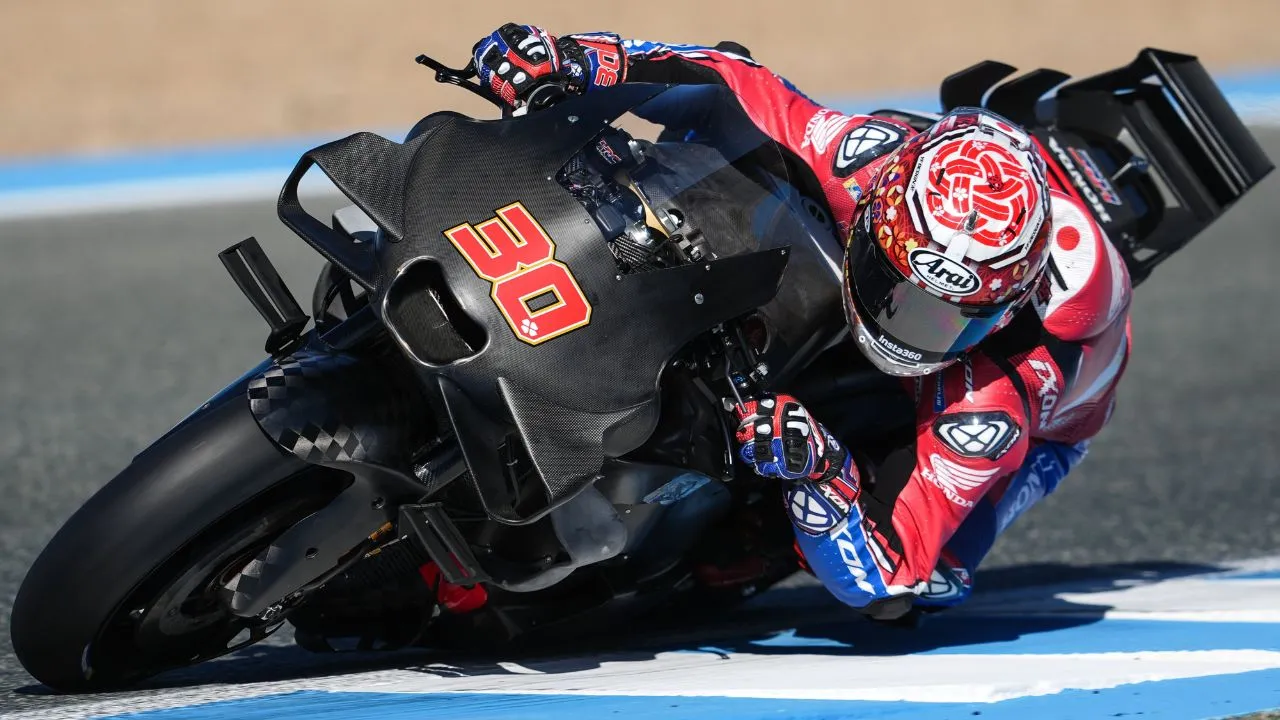
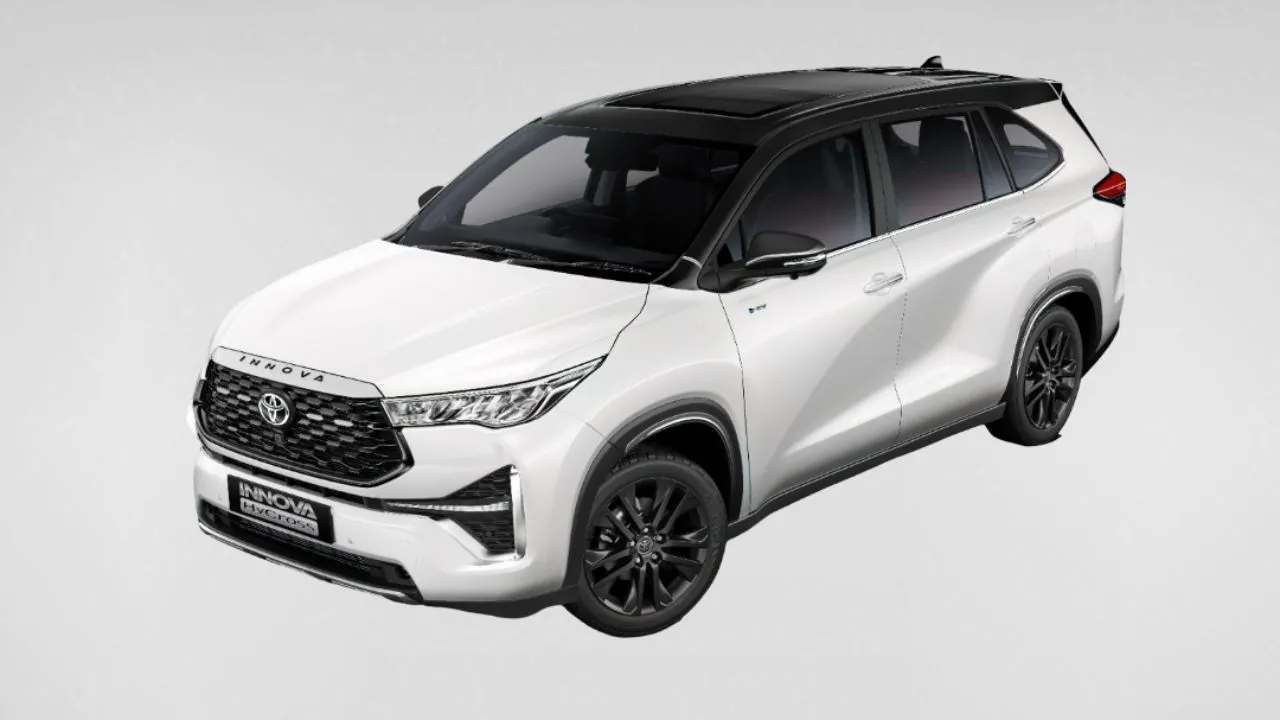















Write your Comment on